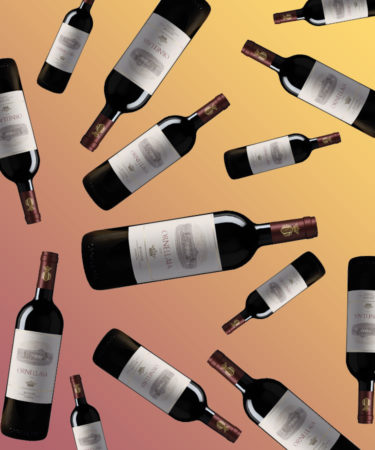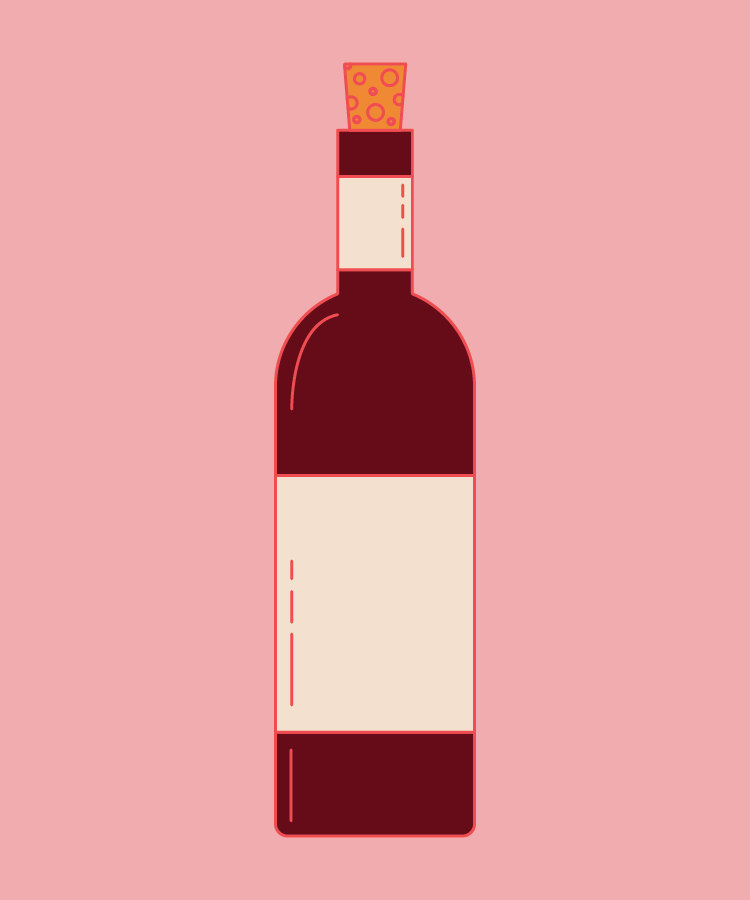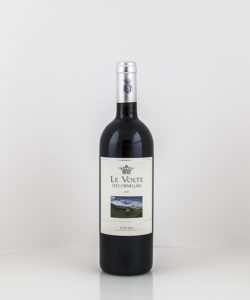Made on Tuscany’s Maremma coast, Super Tuscan wines showcase French grapes — a notable break from Italian tradition. Three estates, each founded by members of the Antinori family, pioneered the category. With 26 generations of winemaking history, the Antinori family holds one of the oldest lineages in the global wine industry.
Piero Antinori debuted Tignanello in the early 1970s; a few years earlier, his cousin, Mario Incisa della Rocchetta, kickstarted the category with Sassicaia. In 1981, Antinori’s younger brother Lodovico founded the Ornellaia estate on property neighboring the Sassicaia estate. Ornellaia released its first Tuscan Bordeaux blend in 1985 and celebrated the opening of its winemaking facility two years later.
Here are seven more things you should know about Ornellaia.
It’s an almost entirely French operation.
Ornellaia’s flagship wine, Ornellaia Bolgheri Superiore, is a Cabernet Sauvignon-driven blend that also contains Merlot, Cabernet Franc, and a seasoning of Petit Verdot. The estate’s second wine, Le Serre Nuove dell’Ornellaia, contains the same varieties, but the fruit comes from younger vines. Traditionally, this wine features a larger proportion of Merlot than the Ornellaia Bolgheri Superiore blend. Ornellaia’s third wine, Le Volte dell’Ornellaia, is the estate’s only red wine that features an Italian grape variety, blending Sangiovese with Merlot and Cabernet Sauvignon.
French grapes are the leading components in Ornellaia’s white wines, too. Ornellaia Bianco blends Sauvignon Blanc with a very small amount of Viognier, while the estate’s second white, Poggio alle Gazze dell’Ornellaia, includes those alongside Italian grapes Vermentino and Verdicchio. Ornellaia’s sweet wine, Ornus dell’Ornellaia, is a 100 percent late-harvest Petit Manseng, an important white grape variety in southwest France.
The estate’s winemaker also has French roots.
In 2005, Axel Heinz took the position of senior winemaker at Ornellaia. Born in Munich to a French mother and German father, Heinz studied oenology in Bordeaux, where he then started his winemaking career.
The company’s list of owners and winemakers is a who’s who of wine.
High-profile names have been involved in Ornellaia’s production since its first vintage. Robert Mondavi acquired a minority stake in the estate in 1999, and then gained full ownership in 2001. Between 2002 and 2005, Mondavi co-owned the property with the Frescobaldi family. The Frescobaldis, another Italian family with more than 700 years of winemaking history, bought Ornellaia outright in 2005.
On the winemaking side, internationally renowned wine consultant Michel Rolland, also known as the “flying winemaker,” has acted as a consultant for Ornellaia since 1991.
Ornellaia produces one of the world’s greatest Merlots.
Though produced and sold as a separate entity from Ornellaia, Masseto is arguably the estate’s most sought-after wine. Made entirely from Merlot, its grapes come from the 17-acre Masseto vineyard first planted by Antinori in 1984. The single-vineyard bottling has become a collector’s item, regularly fetching over $1,000 at auction. Bottles average more than $750, according to Wine-Searcher.com.
Maritime influence is key.
The proximity of Ornellaia’s vineyards to the Tuscan coast is vital for maintaining acidity in the grapes. During the sweltering summer months, the Tyrrhenian Sea moderates temperatures, providing cooler nights essential for slowing ripening.
Vineyard plantings are high density.
Ornellaia’s vineyards are planted at medium-high density of around 12,000 plants per acre. The idea is that forcing the vines to compete with one another for water and nutrients increases the quality of the grapes, while keeping the vines small and allowing only a few bunches to grow per plant helps produce concentrated grapes.
Planting at this density is risky in Tuscany because of the low levels of rainfall during the growing season. Crucially, the estate’s vineyards are planted on soil that contains a lot of clay, which effectively holds water.
Ornellaia supports the arts.
In May 2009, Ornellaia started the Vendemmia d’Artista project, through which the estate collaborates with different contemporary artists every year on a bottle label and other works of art. Designs are inspired by a single word chosen by the winemaker to describe the vintage.
There’s one bottle with the special label in each wooden case of six 750-milliliter bottles Ornellaia sells. The estate also produces more than 100 larger-format bottles, with labels signed by the artist. Some are available for sale, but others are reserved for auctions benefitting arts charities.


